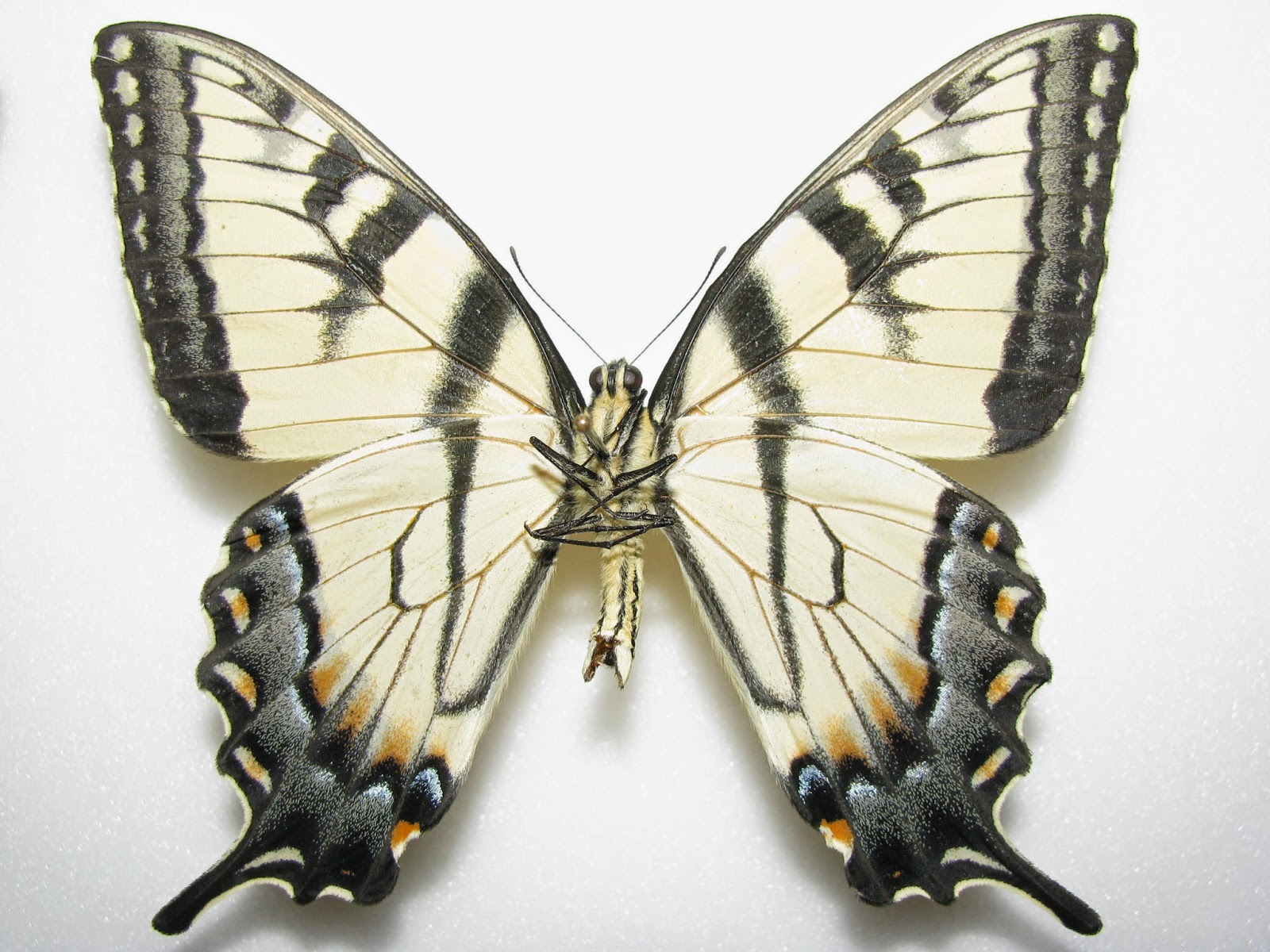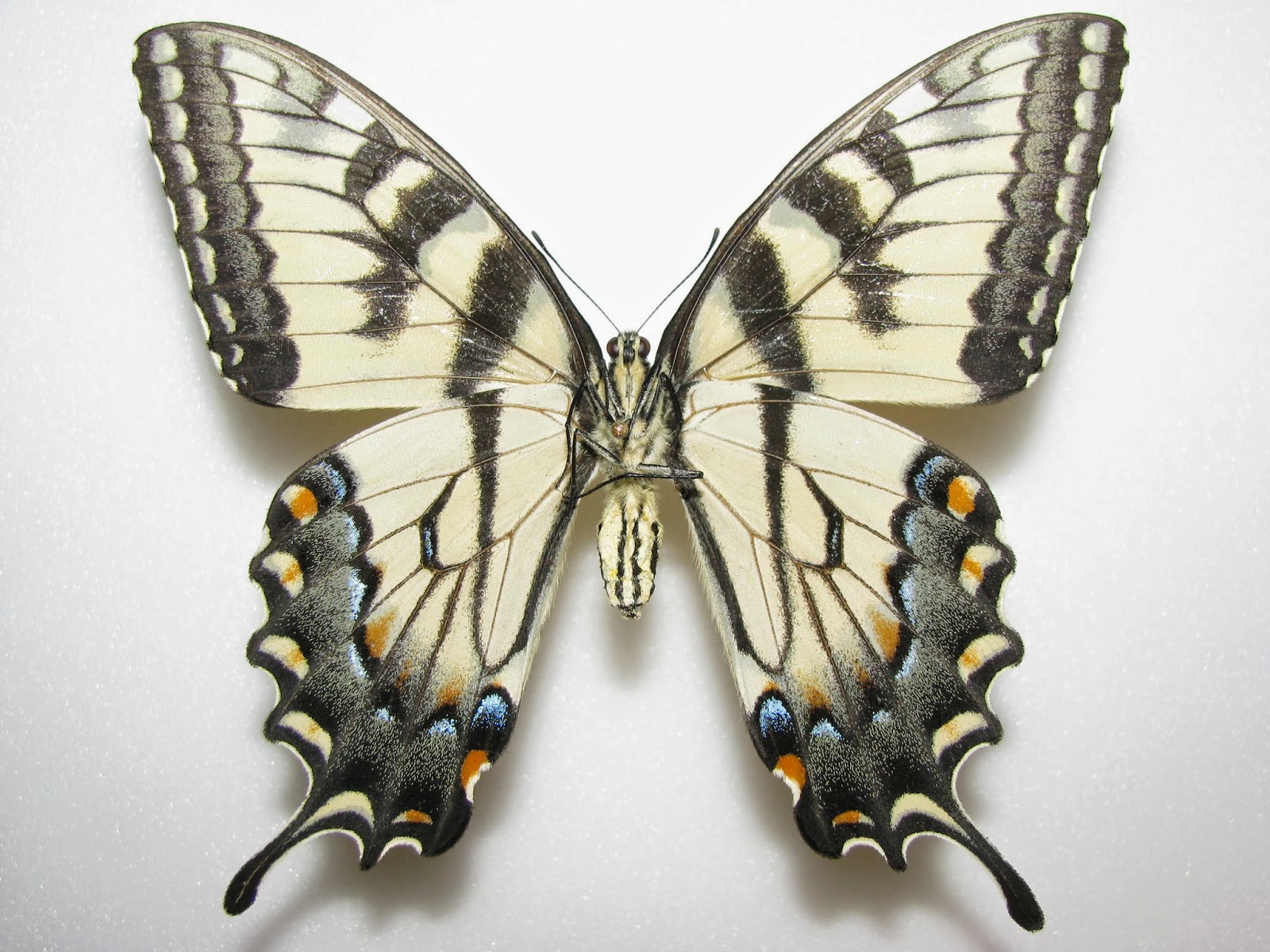Papilio glaucus is one of the most polyphagous swallowtail species known, meaning that its larvae will feed on numerous types of host plants, as opposed to being restricted to just one or a few species. There are so many that I am not going to list them all, but some common ones include cherry, tuliptree, and ash. I typically find ova and larvae on tuliptree (Liriodendron tulipifera), but I'm biased because I really don't focus on the other potential host plants. The green eggs are spherical, about 1 mm across, and laid on the tops of leaves. One time, I also found an egg on hoptree (Ptelea trifoliata) incidentally, which is a known host plant for this species.
After hatching, the caterpillar is black with a white saddle across its mid section, making it resemble bird poop. There may also be a very small patch of white near the back end of the caterpillar.
The larva goes through 5 moults, and the stage between each moult is known as an instar. So after hatching from the egg, you have a 1st instar larva. After the first moult, it has reached the 2nd instar, pictured below. As you can see, it's not dramatically different in terms of overall color, but just larger that's all.
Starting from the 3rd instar, one begins to notice some color changes. The larva becomes just a bit more green and mottled, and there are also now noticeable blue spots placed transversely along some segments. The second picture below also shows the caterpillar's osmeterium. This is an eversible organ that the caterpillar displays when disturbed. It emits a rather pungent odor, and is meant to ward off potential predators. In fact, it is a defining feature of all larvae of the swallowtail butterfly family.
The 4th instar larva is now mostly green but you can still see a remnant of the white saddle it had as a 1st instar larva. You can also see that the larva now has fake eye spots behind its actual head, which is tucked close to the leaf. The green color helps the larva blend in with the foliage, but should it be discovered, it's believed that the fake eye spots may provide some additional protection by startling the predator. Perhaps the caterpillar is trying to mimic a small snake or lizard. In the second picture, you can see the larva just before moulting into a 5th instar caterpillar. The old head capsule is translucent and you can see the new head which has formed just above it.
Many swallowtail species have pupae which can take on different colors depending on the season, often being green in the summer but brown if they are formed during the fall so as to resemble twigs and bark rather than green leaves. Curiously in Papilio glaucus, all the pupae are brown no matter what generation produced them.
These pupae measure just over 3 cm long. If the larva was exposed to warmer temperatures and more daylight during development, the pupa will develop to an adult butterfly which will emerge in about 2 weeks. Otherwise, lower temperatures and shorter days signal to the larva that winter is approaching, and the pupa will go into hibernation (also known as diapause) and emerge the next spring. Below is a newly emerged male Papilio glaucus.
Pictured below are a pair of males (dorsal and ventral) and females (dorsal and ventral). Notice that relative to the male, the females have broader black stripes as well as more blue on the hind wings (usually more blue than this even). Females Eastern Tiger Swallowtails are dimorphic, which means they come in two forms. The pictures below show the regular yellow form, but there is also a form that is nearly totally black except for the submarginal yellow spots. These are known as melanic females and they have a large suffusion of blue on the hind wings, providing a pattern which mimics the distasteful Pipevine Swallowtail (see earlier post). I do not have specimens of this form, but they are common in areas where the Pipevine Swallowtail is also common. Melanic females are not usually found in Papilio canadensis, but extremely rarely an aberration or mutant may occur.















No comments:
Post a Comment